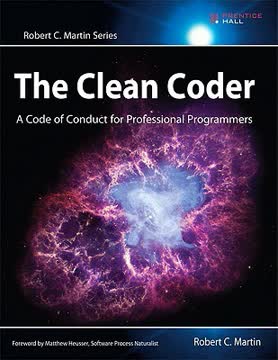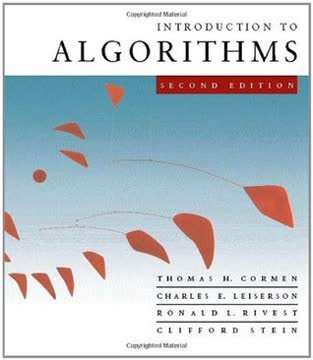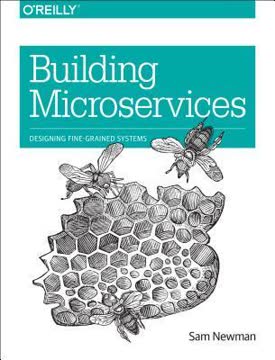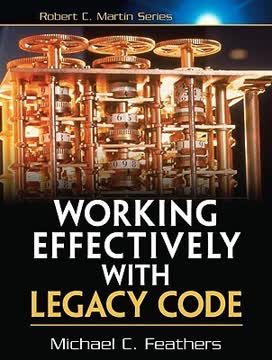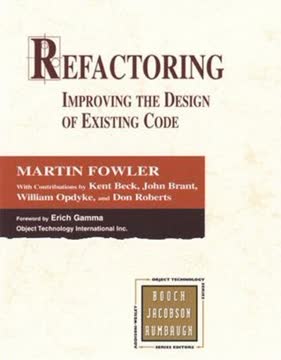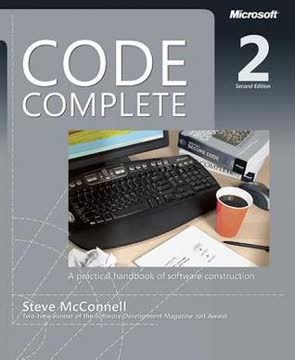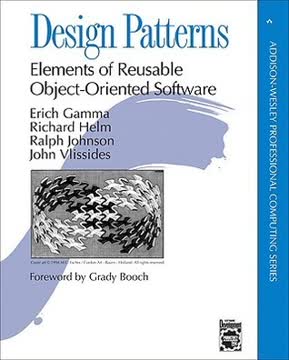つの重要なポイント
1. ソフトウェア設計における概念的整合性の重要性
概念的整合性はシステム設計において最も重要な考慮事項である。
一貫したメンタルモデル: ソフトウェア製品は、アプリケーション、使用戦略、ユーザーインターフェースを含む一貫したメンタルモデルをユーザーに提供する必要がある。この一貫性が使いやすさと製品全体の品質において最も重要な要素である。
大規模プロジェクトの課題: プロジェクトの規模が大きくなり、設計プロセスに多くの人が関与するほど、概念的整合性を達成することが難しくなる。これが、大規模なプログラミングプロジェクトの管理が小規模なものとは質的に異なる理由である。
アーキテクトの役割: 概念的整合性を維持するためには、全体の設計を担当する単一の頭脳または少数の合意した頭脳が必要である。ここでシステムアーキテクトの役割が重要となり、ユーザーの代理人として重要な設計決定を行う。
2. システムアーキテクトの役割はプロジェクト成功の鍵
ソフトウェア開発者がクライアントのために行う最も重要な機能は、製品要件の反復的な抽出と洗練である。
ユーザーの代弁者としてのアーキテクト: システムアーキテクトはユーザーの代表として、ユーザーが認識できる製品のすべての側面の概念的整合性を維持する責任がある。これには、製品の公開メンタルモデルの定義や機能とコントロールの指定が含まれる。
関心の分離: アーキテクトのタスクを管理可能にするためには、アーキテクチャ(ユーザーが認識できる側面)と実装を分離する必要がある。これにより、設計プロセスにおいて明確な境界が生まれ、両側面に集中した努力が可能となる。
再帰的アーキテクチャ: 大規模プロジェクトでは、システムをサブシステムに分割し、それぞれのサブシステムにマスターアーキテクトに報告するアーキテクトを配置する。この再帰的アプローチにより、複雑なシステムでも概念的整合性を維持することができる。
3. セカンドシステム効果は過剰設計と機能膨張を引き起こす
セカンドシステムは設計者が最も危険なシステムであり、一般的に過剰設計される傾向がある。
野心的な設計: 設計者が作成する2番目のシステムは、しばしば過剰な野心と過剰な機能に悩まされる。これは、設計者の自信の増加と、最初のシステムで実現できなかったすべてのアイデアを実装したいという欲求によるものである。
バランスの取れた設計: 大規模で多様なユーザーセットを対象とする場合、異なるユーザーのニーズをバランスさせることが難しくなる。これにより、機能の過剰が発生し、パフォーマンスと使いやすさが損なわれることが多い。
ユーザーセットの定義: これに対抗するためには、ターゲットユーザーセットを明確に定義することが重要である。具体的には、以下の点を含む:
- 彼らが誰であるか
- 彼らが何を必要としているか
- 彼らが何を必要だと思っているか
- 彼らが何を望んでいるか
ユーザー属性とその頻度を推測し文書化することで、設計プロセスに焦点を当て、さらなる調査が必要な領域を明らかにすることができる。
4. WIMPインターフェースはコンピュータとのユーザーインタラクションを革命化した
WIMPは、デスクトップメタファーという親しみやすいメンタルモデルを採用し、コンピュータグラフィックスの実装を活用するために慎重に一貫して拡張することで、概念的整合性を達成した優れたユーザーインターフェースの例である。
メタファーによる概念的整合性: Windows、Icons、Menus、Pointing(WIMP)インターフェースは、親しみやすいデスクトップメタファーを採用し、それをコンピュータ環境に一貫して拡張することで概念的整合性を達成した。
パワーと使いやすさのバランス: WIMPインターフェースは、経験豊富なユーザーに対するパワーと初心者に対する使いやすさのバランスをうまく取っている:
- メニューは新しいユーザーに発見可能なオプションを提供
- キーボードショートカットはパワーユーザーに効率を提供
- インターフェースはこれらのモード間のスムーズな移行を可能にする
標準の強制: WIMPインターフェースの成功は、以下の方法で達成された:
- インターフェースを読み取り専用メモリに組み込む
- 経営陣のコミットメントと説得
- 非準拠製品に対するレビュアーからの批判
このアプローチは、アーキテクチャ標準の強制における直接的な組み込みの力を示している。
5. ウォーターフォールモデルの欠陥;インクリメンタル開発の優位性
ウォーターフォールモデルの基本的な誤りは、プロジェクトが一度だけプロセスを通過し、アーキテクチャが優れていて使いやすく、実装設計が健全であり、テストが進むにつれて実現が修正可能であると仮定することである。
ウォーターフォールモデルの限界:
- ステージを直線的に進行することを前提としている
- システムとユーザーテストを最後に配置している
- 必要な上流フィードバックを考慮していない
インクリメンタル開発の利点:
- 早期のユーザーテストが可能
- すべての段階で稼働システムを提供
- 予算内での構築戦略を可能にする
- 目に見える進捗によりチームの士気を向上させる
漸進的な洗練: 基本的なエンドツーエンドのスケルトンシステムから始め、モジュールを段階的に追加および洗練する。このアプローチにより、ユーザーフィードバックや新たな要件に基づいて継続的なテストと適応が可能となる。
6. 効果的なプロジェクト管理には明確な文書とマイルストーンが必要
マイルストーンは具体的で特定可能な、測定可能なイベントであり、ナイフエッジの鋭さで定義されなければならない。
重要な文書: 少数の明確に定義された文書がプロジェクト管理の重要なツールとして機能する:
- 目標
- ユーザーマニュアル
- スケジュール
- 予算
- 組織図
- スペース配分
マイルストーンの特性:
- 具体的で測定可能
- 曖昧さを防ぐために鋭く定義されている
- 進捗を追跡し、遅延を特定するために使用される
コミュニケーションツール: これらの文書とマイルストーンは多目的に使用される:
- 思考を集中させ、議論を結晶化する
- 計画と決定をチームに伝える
- 状況追跡と問題の早期警告の基礎を提供する
7. ソフトウェア工学は生産性と複雑性において独自の課題に直面している
ソフトウェアシステムは、おそらく人類が作るものの中で最も複雑で複雑なものである。
固有の複雑性: ソフトウェアシステムは、その抽象的な性質とさまざまな人間の制度やシステムに適合する必要があるため、本質的に複雑である。
生産性のパラドックス: ハードウェア製造の生産性は劇的に向上しているが、ソフトウェア開発の生産性は同等の向上を見ていない。これは主にソフトウェア開発が労働集約的であるためである。
課題:
- 見えないこと: ソフトウェアには自然な幾何学的表現がない
- 変更可能性: ソフトウェアは常に変更の圧力にさらされている
- 適合性: ソフトウェアはさまざまな外部システムや慣習に適応する必要がある
8. 神話的な人月の誤謬: 遅れたプロジェクトに人員を追加するとさらに遅れる
ブルックスの法則: 遅れたソフトウェアプロジェクトに人員を追加するとさらに遅れる。
誤謬の理由:
- 新しいチームメンバーの立ち上げ時間
- コミュニケーションのオーバーヘッドの増加
- タスクの断片化
影響:
- 初期の計画と見積もりが重要
- プロジェクトは相互依存性を最小限に抑えるように構造化されるべき
- 人員を追加する前に代替戦略(例:範囲の縮小)を検討するべき
緩和戦略:
- 小規模で熟練したチームの使用(例:外科チームモデル)
- 明確な責任分担
- 効果的なコミュニケーションと文書化の実践
9. 自己文書化コードと適切な文書化は不可欠
文書を維持するためには、それを別の文書として保持するのではなく、ソースプログラムに組み込むことが重要である。
自己文書化の実践:
- 意味のある変数名と関数名を使用
- コード内にコメントを組み込む
- 読みやすさを向上させる言語機能を利用
文書の種類:
- ユーザードキュメント: 概要、目的、使用方法
- 技術ドキュメント: アーキテクチャ、設計決定、実装の詳細
文書化戦略:
- コード開発と同時に文書を書く
- コードから文書を生成するツールを使用
- システムが進化するにつれて定期的に文書をレビューし更新する
利点:
- 保守性の向上
- 新しいチームメンバーのオンボーディングが容易
- チームメンバーが離れたときの知識喪失のリスクを軽減
最終更新日:
FAQ
What's The Mythical Man-Month about?
- Focus on Software Engineering: The book delves into the complexities and challenges of managing large software projects, highlighting the unique aspects of software engineering.
- Essays and Insights: It is a collection of essays by Frederick P. Brooks Jr., based on his experiences with the IBM System/360 project.
- Key Concepts: Introduces critical ideas like "Brooks's Law," which states that "adding manpower to a late software project makes it later."
Why should I read The Mythical Man-Month?
- Timeless Relevance: Despite its 1975 publication, the insights remain pertinent as many software engineering challenges persist today.
- Management Techniques: Offers valuable management strategies and philosophies to improve project outcomes and team dynamics.
- Influential Work: Considered a classic in software engineering literature, it has shaped the thinking of generations of developers and managers.
What are the key takeaways of The Mythical Man-Month?
- Importance of Planning: Effective planning and realistic scheduling are crucial for software project success.
- Conceptual Integrity: Maintaining a unified vision and design is essential for a coherent software product.
- Communication is Key: Clear communication among team members and stakeholders is vital to avoid misunderstandings.
What is Brooks's Law, and why is it significant?
- Definition of Brooks's Law: States that "adding manpower to a late software project makes it later," highlighting inefficiencies in team expansion.
- Communication Overhead: More people increase communication needs, leading to delays.
- Focus on Quality: Emphasizes the need for skilled individuals over sheer numbers in team composition.
What does the term "Mythical Man-Month" mean?
- Concept of Man-Month: Refers to the flawed assumption that human labor can be measured in interchangeable units like "man-months."
- Misleading Metric: Highlights the misconception that more workers will proportionally decrease project time.
- Effort vs. Progress: Argues that effort does not equate to progress, especially in complex projects.
What is the "Second-System Effect" mentioned in The Mythical Man-Month?
- Definition of the Effect: Engineers tend to over-design their second system, adding unnecessary features and complexity.
- Historical Context: Uses OS/360 as a case study, where excessive features led to inefficiency.
- Advice for Engineers: Maintain simplicity and focus on essential features to avoid this pitfall.
How does The Mythical Man-Month address the challenges of team communication?
- Communication Overhead: Adding more people increases communication needs, leading to inefficiencies.
- Team Structure: Smaller teams are often more effective due to reduced communication complexity.
- Documentation and Meetings: Proper documentation and regular meetings ensure alignment among team members.
What is the "surgical team" concept introduced in The Mythical Man-Month?
- Definition of Surgical Team: A small, skilled group of programmers led by a "chief programmer" to maintain project integrity.
- Focus on Conceptual Integrity: The chief programmer ensures the overall design and implementation.
- Efficiency in Development: Aims to reduce communication overhead and increase efficiency through cohesive collaboration.
How does The Mythical Man-Month suggest handling schedule slippage?
- Recognize Small Delays: Small delays can accumulate, so they should be addressed promptly.
- Use of Milestones: Establish clear milestones to track progress and identify delays.
- Communication with Stakeholders: Open communication about potential delays is crucial for managing expectations.
What does Brooks mean by "self-documenting programs"?
- Definition of Self-Documenting Programs: Programs designed to be understandable without extensive external documentation.
- Techniques for Self-Documentation: Use meaningful variable names, clear structure, and inline comments.
- Benefits of Self-Documentation: Easier maintenance and modification, leading to better long-term software quality.
What are the best quotes from The Mythical Man-Month and what do they mean?
- "Good cooking takes time.": Emphasizes the importance of allowing sufficient time for quality software development.
- "Plan to throw one away.": Suggests that initial versions are often flawed and should be seen as prototypes.
- "Conceptual integrity is the most important consideration in system design.": Advocates for a coherent vision in software design.
How does Brooks suggest improving software productivity?
- Focus on Essential Tasks: Prioritize conceptual clarity and design integrity over mere implementation.
- Incremental Development: Advocate for early user feedback and iterative refinement.
- Effective Team Management: Well-structured teams with clear roles can significantly enhance productivity.
レビュー
『人月の神話』は、ソフトウェア工学管理に関する重要な著作であり、出版から数十年経った今でもその relevancy を保っている。読者は、プロジェクト計画、チーム構造、大規模ソフトウェア開発の課題に関するブルックスの洞察を高く評価している。ブルックスの法則や概念的整合性の重要性など、多くの概念は今日でも適用可能である。しかし、一部のレビュアーは、技術的な参照が古いことや性別に偏った言語が使われていることを指摘している。この本の永続的な価値は、ソフトウェア開発における人間要因に関する普遍的な知恵にあり、業界のプロフェッショナルにとって必読の書となっている。
Similar Books
